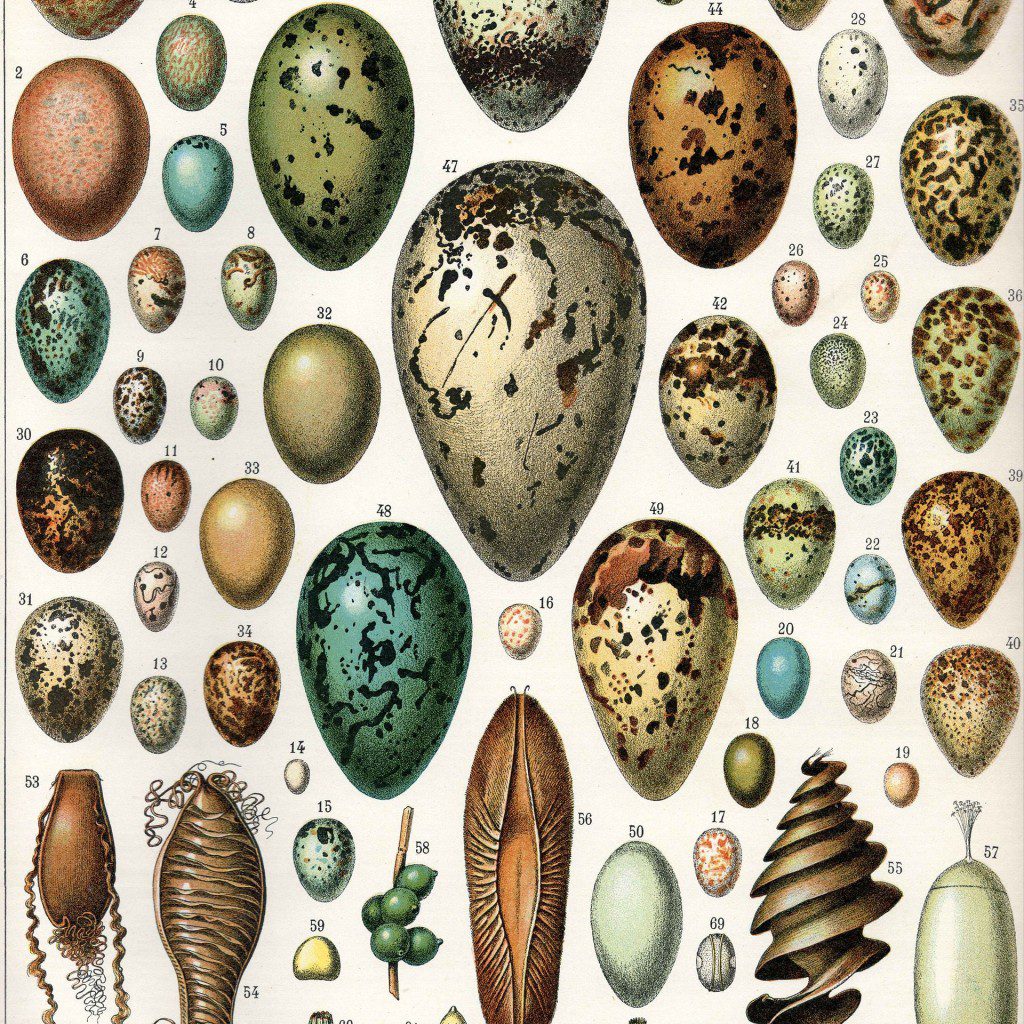I earlier blogged about Oology, the study of eggs, actually their shells. In the 19th and early 20th century it was a hobby, like stamp and coin collecting. Eggs were collected from wild birds’ nests, holes made in both ends, and the material inside blown out. They were displayed, sold, and traded, like many collectors’ items today. This practice led to the decline of several bird species and so has been illegal since the early 20th century.
Meanwhile, many museums have inherited the eggs from the collections of oologists or their heirs. The eggs, like many other collections of things in museums, serve as potential studies such as the one on DDT. When the populations of top bird predators such as Bald Eagles, Peregrine Falcons, and Brown Pelicans began to decline and DDT became a suspect as the cause. But studies showed that these birds were not being poisoned by DDT, in fact they were quite resistant to the chemical. Now we know that DDT played a role in the decline of Bald Eagle and other bird-of-prey populations but the link between DDT and the eggshell thinning that caused reproductive failure in these birds was not initially recognized. Only after further study did scientists discover that the breakdown metabolite DDE prevented calcium deposition in the shell, causing thinner eggs, which cracked when the parents sat on them.

When bird eggs were collected they typically came with a history such as date and place of collection as well as species identification. That information became quite valuable to a group of researchers who examined the data on 72 bird species at the Field Museum in Chicago. They discovered that about a third of the species from the Chicagoland region are nesting 25 days earlier than they did in the past, about a century ago.
The logical conclusion by the scientists was that climate change, the warming of the planet, is causing bird species to adapt to it by nesting earlier. Since the sources of food, flowers and insects, are coming out earlier in the year, natural selection is choosing the birds that nest earlier. But there was no consistent source of long-term temperature data to use, so the scientists used carbon dioxide data which correlates with temperature. And the carbon dioxide levels did correlate with the earlier dates of nesting for the birds which moved up their nesting times. The changes in temperature are small, just a few degrees, but sufficient to alter the times of flower, fruit, seed, and insect appearance, and subsequently, bird nesting times.
Besides being another warning about the effects of climate change, this study points out the importance of building and maintaining museum collections, whether they be eggs, rocks, mammal skins, or artifacts.
Personally, I did one study years ago, also at the Chicago Field Museum, measuring the rictal bristles on hundreds of bird skins from around the world. I very much appreciated this terrific resource and the great staff who maintain it.
Could you share more about the study you did on rictal bristles., please?
See https://ornithology.com/rictal-bristles/
Whoa! What kinds of birds produce the eggs numbered 53-58 – especially those corkscrew-shaped?!!!
Well, I presume the reader knows enough eliminate those as bird eggs, and i suspect those are the egg cases of sharks or rays.